
Categories: Sightseeing / Travel
The Wright Brothers’ Legacy
I’m interrupting the regularly scheduled programming of holiday posts by sharing one of the most important breakthroughs in history…
Two days ago, December 17th, was the anniversary of the very first flight by the Wright Brothers back in 1903. Yep, some 108 years ago.
The brothers, Wilbur (1867-1912) and Orville (1871-1948) from Dayton, Ohio, built the “first powered aircraft.” They started with gliders (think enormous “kites”) then progressed to a pilot (one of the brothers) manning the glider. Eventually, they powered it with an 8 horsepower motor weighing over 200 pounds which resulted in this:
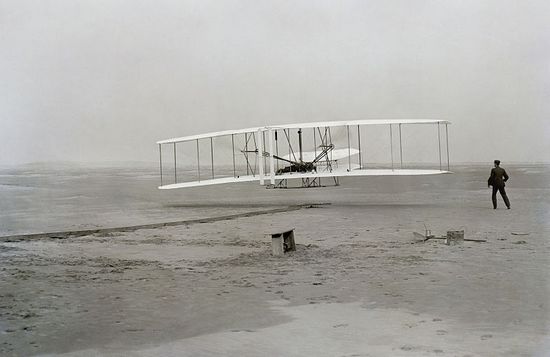
The very first powered flight (December 17, 1903 in Kill Devil Hills, Outer Banks, North Carolina)
Orville traveled 120 feet in 12 seconds while Wilbur watched
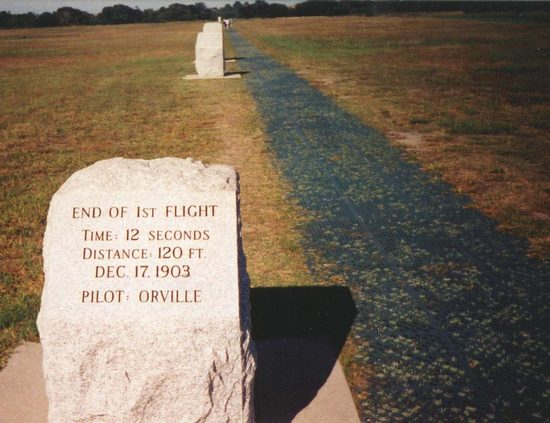
Landmark of the recorded “1st Flight” by the Wright Brothers (photo taken Summer 2002)
The 2 large stones in the background mark the distances traveled for attempts #2 (175 feet in 12 seconds by Wilbur) & #3 (200 feet in 15 seconds by Orville)
An ex and I had explored Outer Banks, North Carolina, during the Summer of 2002. We had stopped in Kill Devil Hills (just south of Kitty Hawk) to see the Wright Brothers’ Memorial. Its Visitor’s Center was closed for renovations (i.e. roof replacement, new carpet installation, some minor electrical work & painting) and a trailer served as the temporary Center. The original 10 tools, original 1903 engine crankcase and replica of 1901 wind tunnel were all available for view. The Memorial is located on a huge grassy park.
Here’s a synopsis of our tour guide’s narrative:
Kill Devil Hills didn’t have the trees (like now) because it used to be a sandbar, i.e. sand used to roll in. Four miles north is Kitty Hawk, which was a village at the time. The Wright Brothers, Orville and Wilbur, were from Dayton, Ohio. They had opened Wright Cycle in Dayton to sell and repair bicycles. Soon they started to get restless. They arrived in North Carolina in 1900. From 1899 through 1902, they worked out the mechanics of flight (i.e. wing warping, pitch roll & yaw, making glider turn), and finally unlocked the secrets of flying. However, they weren’t without problems; particularly when they first started out with a 8 horsepower motor weighing over 200 pounds and a round-trip commute to Dayton took 10 days. With help from their Wright Cycle machinist, they built a 12 horsepower motor weighing 180 pounds.
There’s one thing the Brothers knew early on…they wanted soft sand for landing. There were 2 buildings in their “camp”, a living quarters and hangar. They determined that they would need 16mph for take-off and built a 60 foot monorail (part of it still exists) to help with this daunting task.
In mid-December 1903, Wilbur won a coin toss to go first, but crashed the flyer. It took 2 days to fix the engine. On December 17th, Orville traveled 120 feet in 12 seconds. Taking turns learning how to fly, Wilbur went next and traveled 175 feet in 12 seconds. Orville topped Wilbur’s distance at 200 feet in 15 seconds. Finally on their 4th try, Wilbur flew 59 seconds with a distance of 852 feet. Each of the distances mentioned are marked by large stones. This is the very reason why North Carolina is credited for being “First in Flight.”
A year later (2003), my ex and I visited Washington D.C. and toured the National Air and Space Museum, which is heaven on earth for pilots, aeronautical engineers or plane enthusiasts. Real planes from all over the world were everywhere, suspended from the ceiling or simply part of some exhibit!
There was a gallery dedicated to the “Inventors of Flight,” the Wright Brothers, and the actual 1903 Wright Flyer was smack-dab in the center of the room.
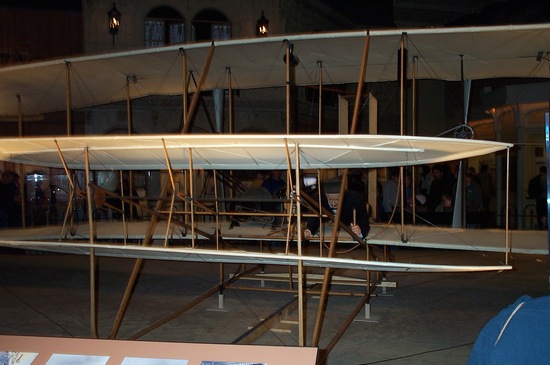
Front view of the 1903 Wright Flyer
From the Wright gallery, we learned only 5 bicycles manufactured by the Brothers (their “day jobs”) are known to exist—and the “St. Clair” was on display! It was built in 1898 and sold for $42.50. The brothers wrote the United States Bureau in Washington, DC to find out suitable locations to test their glider (they needed a site with wide-open spaces and strong steady winds). Among the place that seemed promising was Kitty Hawk (North Carolina), a small fishing village on an isolated strip of beach just north of Kill Devil Hills. The gallery covered all aspects of the Brothers’ claim to fame, including their biographies, not to mention all the plane components that were on display.
I think it’s fair to say if it hadn’t been for Wilbur and Orville Wright, the consequent development of aircrafts and space technology during the 20th century may have taken place much later. Besides all kinds of planes inside the National Air and Space Museum, there were helicopters, rockets, lunar modules, sky labs, satellites…and a Russian rocket on display! Here’s a glimpse of all the things we saw:
Regular holiday programming will resume after this post, so please stay tuned for Meltaway Pecan Balls (aka Mexican Wedding Cookies).
**1st pic from wikipedia.org
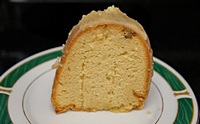





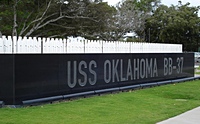
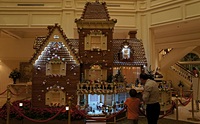


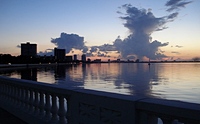

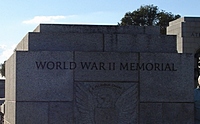
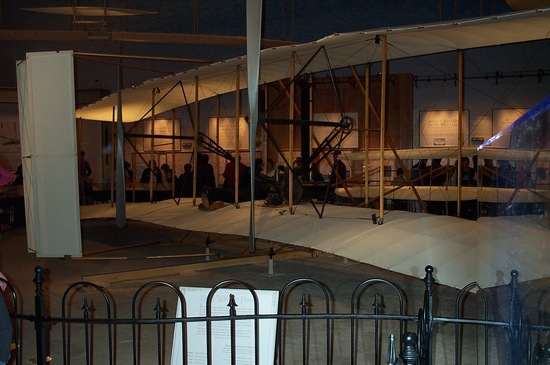
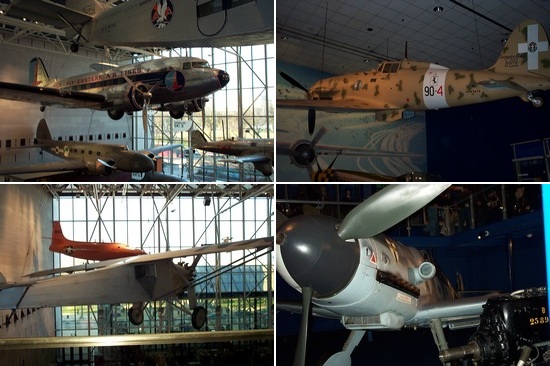
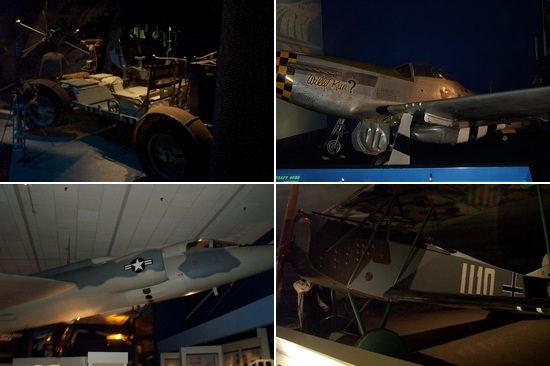
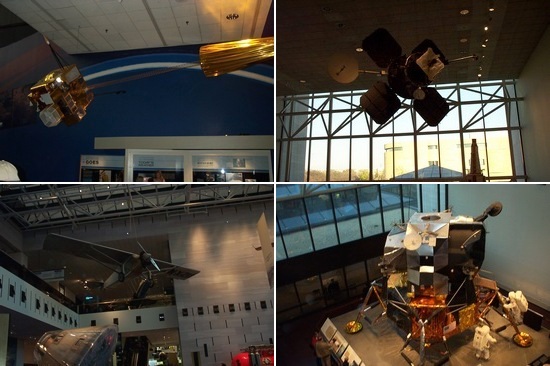












 Tags:
Tags: 




























































































Discussion
No comments for “The Wright Brothers’ Legacy”
Post a comment